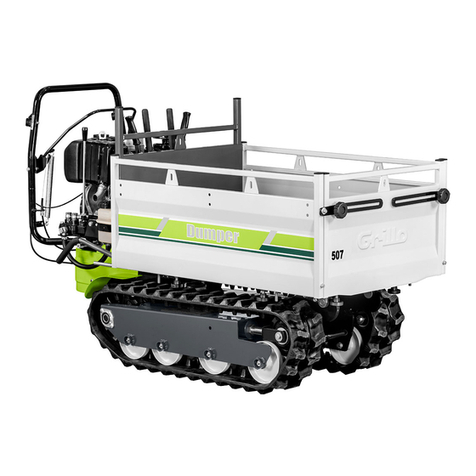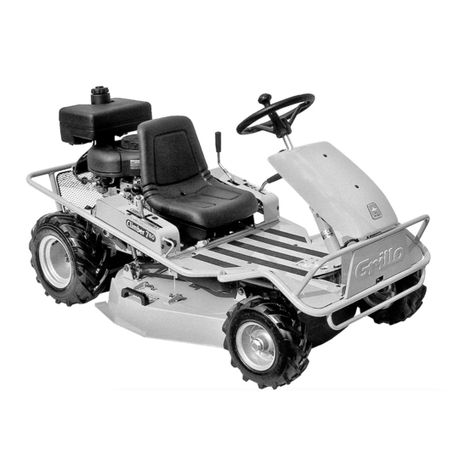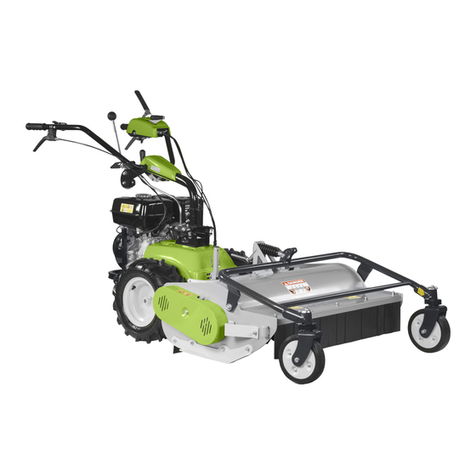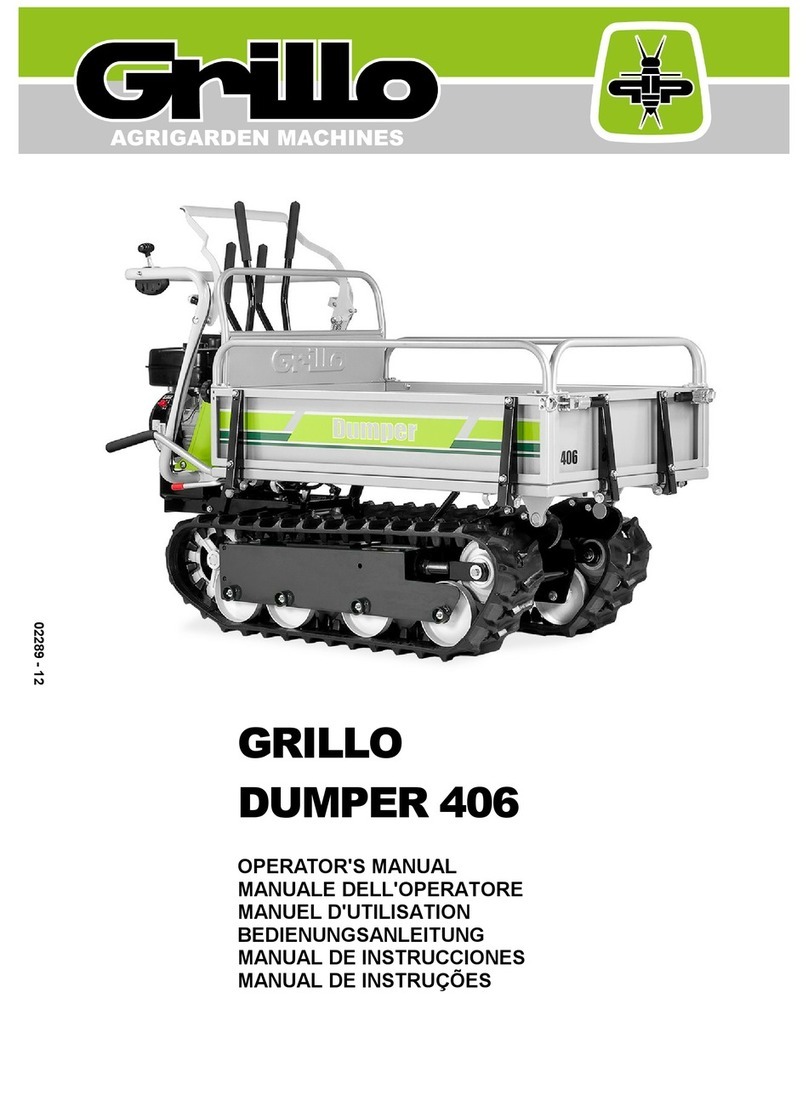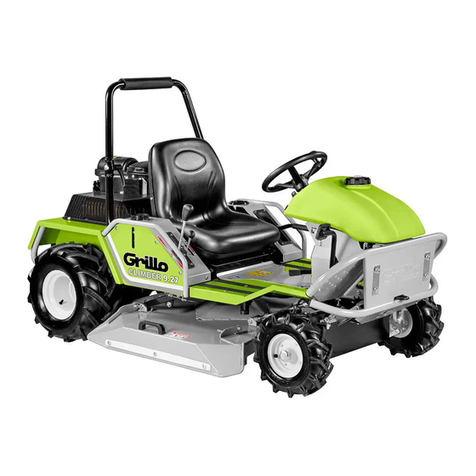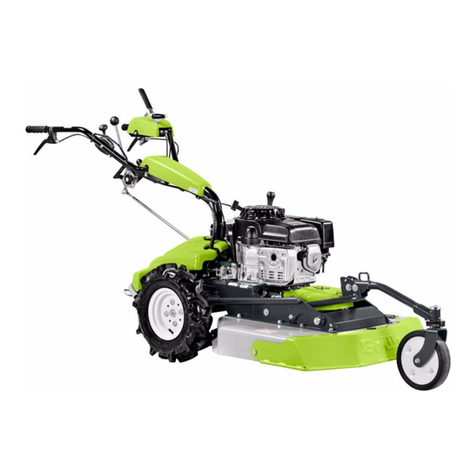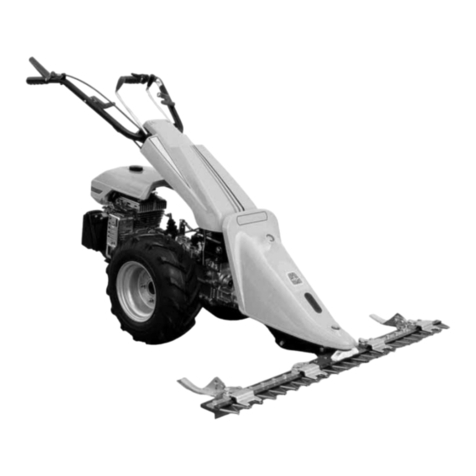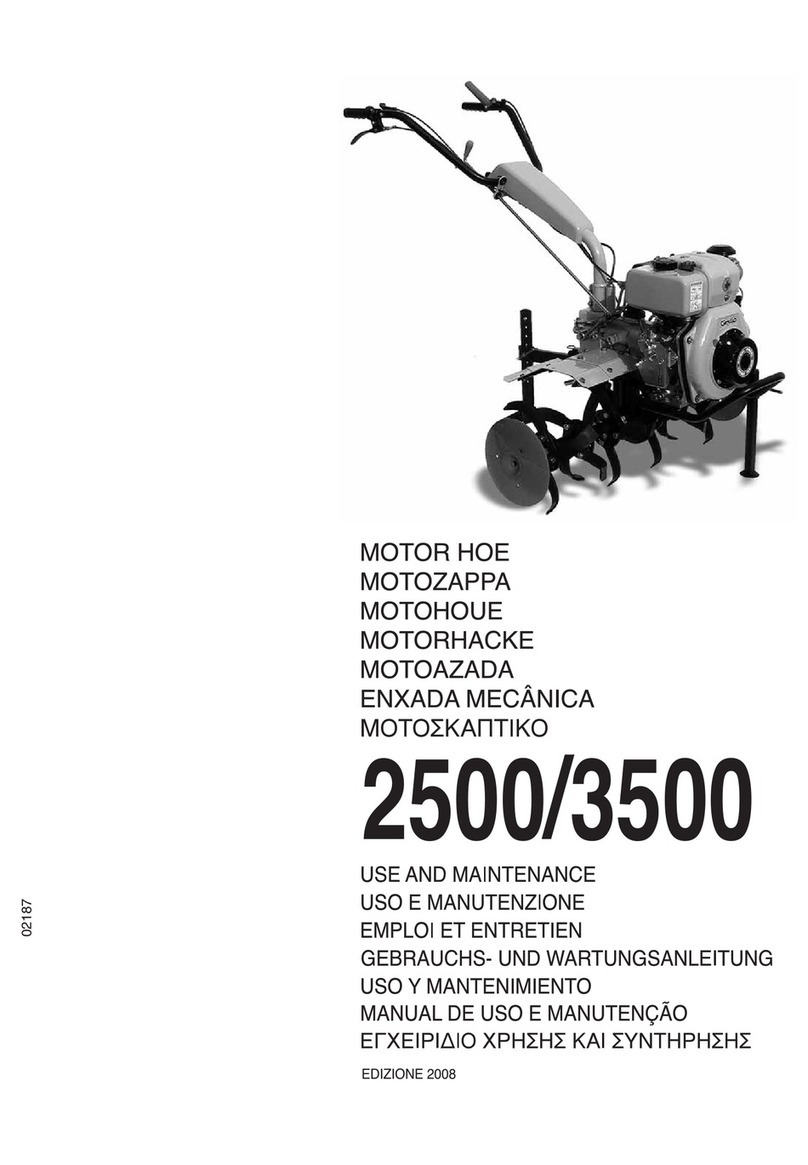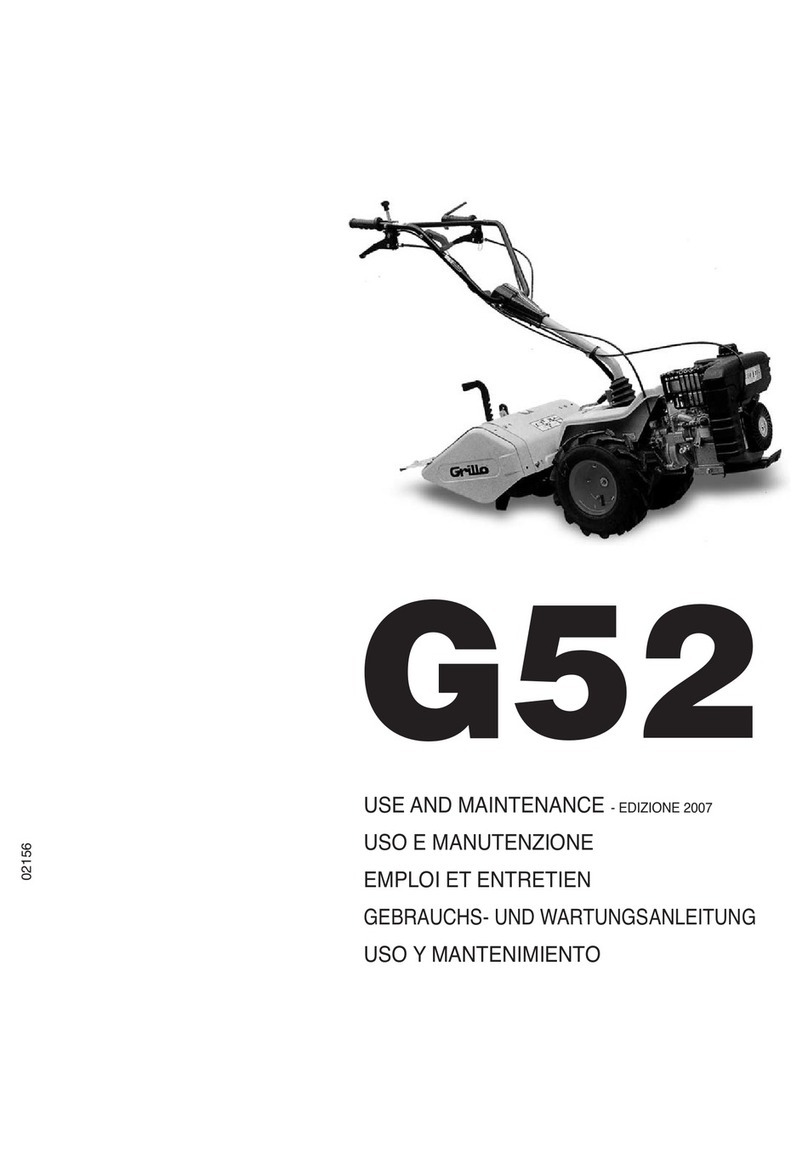Take special care not to touch hot parts of the engine.
Prestate particolare attenzione a non entrare in contatto con parti
surriscaldate del motore.
Veiller tout particulièrement à ne pas toucher des éléments
surchauffés du moteur.
Achtung – keine heißen Motorteile erühren!
No tocar partes recalentadas del motor.
Tome muito cuidado para não entrar em contacto com as partes
aquecidas do motor.
Не дотрагиваться до нагретых частей двигателя.
Engine exhaust fumes can cause sickness or death. If it is necessary
to run an engine in an enclosed area, use an exhaust pipe extension
to remove the fumes. Always try to work in a well ventilated area.
I gas di scarico possono causare malanni o morte. Se è necessario
mettere in moto un motore in uno spazio chiuso, usare una prolunga
tubo di scarico per far uscire il fumo. Lavorare in una zona ben
ventilata.
L’exhalation des gaz d’échappement peut être cause d’intoxication ou
de mort. S’il est vraiment nécessaire d’allumer le moteur à l’intérieur,
appliquer au tuyau d’échappement un autre tuyau extensi le pour
permettre la sortie des gaz. Il est toujours mieux de travailler en plein
air.
Auspuffgase können Übelkeit oder od verursachen. Wenn es
notwendig ist, einen Motor in einem geschlossenen Raum laufen zu
lassen, benützen Sie eine Verlängerung, um das Auspuffgas
abzuleiten. Versuchen Sie immer in einem gut belüfteten Raum zu
arbeiten.
Los gases de escape pueden provocar enfermedades o muerte. De
tener que poner en marcha un motor en un espacio cerrado, usar una
prolongación del tu o de escape para que salga el humo. Tra ajar en
una zona ien ventilada.
Os gases de escape podem causar danos ou morte. Caso seja
necessário fazer com que o motor funcione num espaço fechado,
utilize uma extensão para o tubo de escape que os fumos sejam
expulso para o exterior. rabalhe numa área bem ventilada.
Выхлопные газы могут вызвать болезни или смерть. Если
необходимо включить двигатель в закрытом помещении,
использовать удлинитель выхлопной трубы для вывода дыма.
Работать в хорошо проветриваемом помещении.
Caution! Never touch moving pulleys or elts. They can e very
dangerous. Never do maintenance with engine running.
Attenzione! Non toccare mai pulegge o cinghie in movimento, creano
gravi danni alla persona. Non fare manutenzione col motore in moto.
Attention! Ne jamais toucher ni poulies ni courroies en mouvement,
elles peuvent provoquer des accidents aux personnes. Ne pas faire
l’entretien quand le moteur est en marche.
Vorsicht! Nie laufende Riemenschei en oder Trei riemen anfassen,
da es gefährlich ist. Nie ei laufendem Motor Instandhaltung machen.
¡Atención! No tocar jamás poleas o correas en movimiento, porque
pueden crear graves daños a la persona. No efectuar el
mantenimiento con el motor en marcha.
Atenção! Nunca toque nas polias ou correias em movimento devido
ao alto risco de ferimentos. Nunca faça a manutenção da máquina
com o motor ligado.
Внимание! Никогда не прикасайтесь к движущимся ремней и
шкивов, создают серьезную травму. Не делай обслуживания при
работающем двигателе.
A urst which separates the tyre from the rim parts can cause serious
injury or death.
La separazione fra pneumatico e cerchione, causata dall’esplosione
del pneumatico, può provocare serie ferite o addirittura la morte.
La séparation entre le pneu et la jante, provoquée par l’explosion
d’une roue peut causer des dommages, lessures ou la mort.
Die Trennung der Räder von den Felgen durch Explosion kann
schwere Verletzungen oder den Tod verursachen.
La separación entre el neumático y la llanta producida por la
explosión del neumático puede provocar graves herida e incluso la
muerte.
A separação entre o pneumático e o aro, provocada pela explosão do
pneumático, pode causar graves ferimentos ou até mesmo a morte.
Отрыв покрышки от обода, вызванный её взрывом, может
привести к серьёзным травмам или даже смерти.
